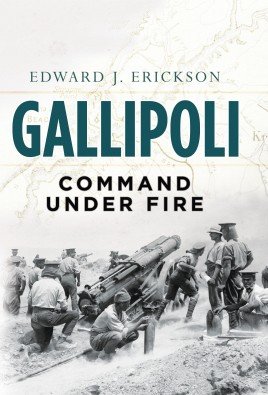-
Załączniki bezpieczeństwa
Załczniki do produktuZałączniki dotyczące bezpieczeństwa produktu zawierają informacje o opakowaniu produktu i mogą dostarczać kluczowych informacji dotyczących bezpieczeństwa konkretnego produktu
-
Informacje o producencie
Informacje o producencieInformacje dotyczące produktu obejmują adres i powiązane dane producenta produktu.Osprey Publishing
-
Osoba odpowiedzialna w UE
Osoba odpowiedzialna w UEPodmiot gospodarczy z siedzibą w UE zapewniający zgodność produktu z wymaganymi przepisami.
ABOUT THIS PRODUCT
Unique among World War I campaigns, the fighting at Gallipoli brought together a modern amphibious assault and multi-national combined operations. It took place on a landscape littered with classical and romantic sites - just across the Dardanelles from the ruins of Homer's Troy. The campaign became, perhaps, the greatest 'what if' of the war. The concept behind it was grand strategy of the highest order, had it been successful it might have led to conditions ending the war two years early on Allied terms. This could have avoided the bloodletting of 1916-18, saved Tsarist Russia from revolution and side stepped the disastrous Treaty of Versailles - in effect, altering the course of the entire 20th century. This study is the first to focus on operational and campaign-level decisions and actions, which drove the conduct of the campaign. It departs from emotive first-hand accounts and offers a broader perspective of the large scale military planning and maneuvering involved in this monstrous struggle on the shores of European Turkey.
BIOGRAPHICAL NOTE
Dr Edward J. Erickson is an Associate Professor of Military History at the Command and Staff College, Marine Corps University in Quantico, Virginia. He served in the US Regular Army, reaching the rank of lieutenant colonel in the field artillery during the course of which he served in the Persian Gulf War of 1991, as well as in Sarajevo in 1995, and in the invasion of Iraq in 2003 with the Fourth Infantry Division as General Odierno's political advisor. He is the recipient of two Bronze Star medals, the Legion of Merit and numerous other military awards. He has master's degrees from Colgate University and Saint Lawrence University as well as a Doctorate in History from the University of Leeds in the UK. Dr Erickson is widely recognized as one of the foremost specialists on the Ottoman Army during World War I.
CONTENTS
Acknowledgements
List of maps
List of illustrations
Introduction
Chapter One: The Strategic Setting
Chapter Two: The Opposing Campaign Plans
Chapter Three: The Naval Assault
Chapter Four: Arms and Men
Chapter Five: The Amphibious Assault
Chapter Six: The Ottoman Counter-offensives
Chapter Seven: The ANZAC Break Out
Chapter Eight: The Ending of the Campaign
Appendix
Endnotes
Select Bibliography
Index








